-
Posts
158 -
Joined
-
Last visited
Posts posted by Seán Ó Fearghail
-
-
13 hours ago, 4to5to6 said:
What make of concertina is this?
They are in a Jeffries as replacement lever. Not 100 percent sure who made them. They are very solid.
-
-
27 minutes ago, SteveS said:
I'd read that gum sandarac will make the shellac a little harder - add too much and it becomes brittle.
Right now I'm not using any additive in my polish - the combination of shellac (and natural wax) and 99.9 degree ethyl alcohol seems to be producing a good finish.
Yes I’ve seen people say both things. Maybe it’s worth a test on some scrap wood to see.
I stick with plain shellac when it comes to concertinas as well. -
9 hours ago, SteveS said:
Does anyone use gum sandarac in their shellac finish?
Some say to add a small quantity to the shellac, others say to do the final polish coat with dissolved gum sandarac.
Instead of using gum sandarac, how about using shellac that hasn't been dewaxed?
Yes Sandarac goes nicely in spirit varnishes but it makes the varnish a little softer. They often add it to fiddle varnish. It depends on the end result you want.
-
Are more photos out of the question? Fretwork etc?
-
16 hours ago, Paul Groff said:
Hi Dan,
I think I see where you are going with this idea. I believe when you write " "B/F#" concertinas in effect were Bb/F concertinas in the old high pitch" you mean that *low pitch B/F# concertinas* could possibly be equivalent to *high pitch Bb/F concertinas.* In a way this is fairly close to true (see below **) although I'm not sure it is exactly what Stephen meant. Later in the concertina era (I believe, in the 20th century, after the John Crabb period) I do see German-made concertinas with a B row in low pitch, around A = 435 to A = 437, made for export to England (we can tell that because they turn up in England, are labeled in english, and some of them are copies of 3-row Lachenals -- though with German action design and reeds mounted on longish plates -- and with English rather than German non-equal tuning). The B row of those German-made concertinas in low pitch (A 435-437) is not too far from English-made anglos in Bb/F high pitch (A 452.5) though the latter are audibly flatter to my ear. (see below for the reason **)
However in my interpretation Stephen is talking about the John Crabb period in the late 1800s when English pitch was quite high, usually A 439 to A 460 and with Society of Arts pitch (A 446 to A 448 ) and Philharmonic pitch (A = 452.5) especially common. At this time if the Crabb workshop made a concertina in B/F# it wouldn't be likely to be close to a Bb/F german concertina, rather it would be more likely close to a C/G low-pitch german concertina.
** Close to true. Here are some rule-of-thumb rough conversions for key and pitch. They are based on 12-tone equal temperament for simplicity, although I have evidence that the german concertinas and probably most of the english made anglo concertinas during the John Crabb period were not tuned to equal temperament. If you explore this table, you'll see that "Bb when A = 452.5" is quite flat of "B when A = 435" or even "B when A = 430." But, possibly close enough!
When A = 430 Hz in 12 tone ET, then G#= 405.87 Bb = 455.57 B= 482.66 C=511.36
When A = 435 Hz in 12 tone ET, then G#= 410.60 Bb = 460.87 B= 488.27 C= 517.31
When A = 439 Hz in 12 tone ET, then G#= 414.36 Bb= 465.10 B= 492.76 C= 522.06
When A = 440 Hz in 12 tone ET, then G#= 415.3 Bb = 466.16 B= 493.88 C= 523.25
When A = 447 Hz in 12 tone ET, then G#= 421.91 Bb = 473.58 B= 501.74 C= 531.58
When A = 452 Hz in 12 tone ET, then G#= 426.63 Bb = 478.88 B= 507.36 C= 537.52
When A = 452.5 Hz in 12 tone ET, then G#= 427.10 Bb = 479.41 B= 507.92 C= 538.12
When A = 458 Hz in 12 tone ET, then G#= 432.29 Bb = 485.23 B= 514.09 C= 544.66
When A = 460 Hz in 12 tone ET, then G#= 434.18 Bb = 487.35 B= 516.33 C= 547.03
Note: I had to edit this several times because the information here is so complex to explain. I hope I have it right this time but my apologies if errors remain - I assume we'll sort those out in the ensuing discussion.
Thats fantastic Paul! Thank you!
-
23 hours ago, Geoffrey Crabb said:
As I have, amongst the plethora of old Crabb concertina stuff, the original metal template from which this fretwork design was copied and applied to the instruments prior to piercing, I believe that the tina is an early one, late 1860's early 1870's, by my great grandfather John Crabb 1826-1903.
The B/F# was the most popular for many years as seen from the Sept.1889 - Dec.1891, period of the available sales/production records.
Of the 114 Anglo concertinas made in the Crabb workshop during that period:
21 were C/G,
17 were Bb/F
75 were B/F#,
and 1 was G/D, (The earliest recorded Crabb G/D, a 32 button, metal top, 08/11/1889).,
B natural was also a known requested core key for some Crane duets up to the 1930's.
I'll leave others to speculate why B/F# was so popular.
Geoff
Wow! that is interesting! Thank you so much for the info Geoff. I wonder why that key was so popular? Anyone have an idea? I'm way too far out of my comfort zone to speculate.
-
2 hours ago, bazza said:
I have the same model with no stamp, I was given the same info that Stephen said. they have a lovely tone . Mine was tuned B F#
This was also originally tuned to B f sharp.
-
7 minutes ago, Stephen Chambers said:
Well, if they're not stamped C. Jeffries, Maker, I'd describe them as "John Crabb" - but he probably made them all anyway...
Thanks Stephen. 🙏🏻
-
-
-
-
-
-
I know of one particular concertina that was sold at the same auction house 3 different times... Each time the new owner opened it up and realised that all the reeds had been swapped out for very poor brass reeds, it went back and they sold it again.. And made their seller's/ buyer's fees.. 3 times....
-
Can I take the opportunity to be cheeky and ask if a picture would be possible? I’m sure others would be interested too…
-
Recently was discussed here….
-
I second a vote for Suttner concertinas. They really are fantastic. And when he is in the same country as you, it makes a lot of sense.
-
Thanks Geoff. I was pleasantly surprised with it. (For once!)
-
-
On 11/3/2018 at 4:14 PM, Geoff Wooff said:
Just this last week there was an interesting Wheatstone English for auction on ebay france. Interesting because it was a model 7 ( which is a flat ended Hex. 56 key Tennor Treble) which is quite a usefull budget model. Also of interest was the address of the seller , the town of Guérande on the coast of Brittany, a place famous for its salt industry and sandwiched between the sea and a large wetland area.
I was encouraged by the low bids to look hard at the photos but every steel external part had sure signs of rust. Short of detailed internal pictures I decided it might be too much of a gamble, with the distinct possibility of rusty reeds. I hope that whoever the winner is finds a good set of reeds !
Even though all the rest of the parts are fairly corroded on the outside, the reeds are surprisingly OK! Small bits of rust but I have come across a lot worse. Maybe it didnt live there for long. Or was never played once arriving there. Everything is in very good shape apart from the steel parts on the outside.
-
And just while we're on the subject... I recently serviced a concertina that was only a few years old.. That now lives in Doolin, (on the Atlantic coast) in an old enough house... The reeds that were closest to where the case closed, were already starting to form rust on them...!!! About 6 of them...
-
I'll let you know when I get it Geoff..! ?
-
Hi lads, I'm back in business after a very, very busy year. The best way to get a hold of me is to send me an email at -
ofearghail7@gmail.com
or other details will soon be on the website. I am now permanently located in Athlacca, Co. Limerick, Éire
Best wishes and happy squeezing to everyone! ?
le gach dea-ghuí,
Seán
-
 1
1
-


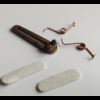
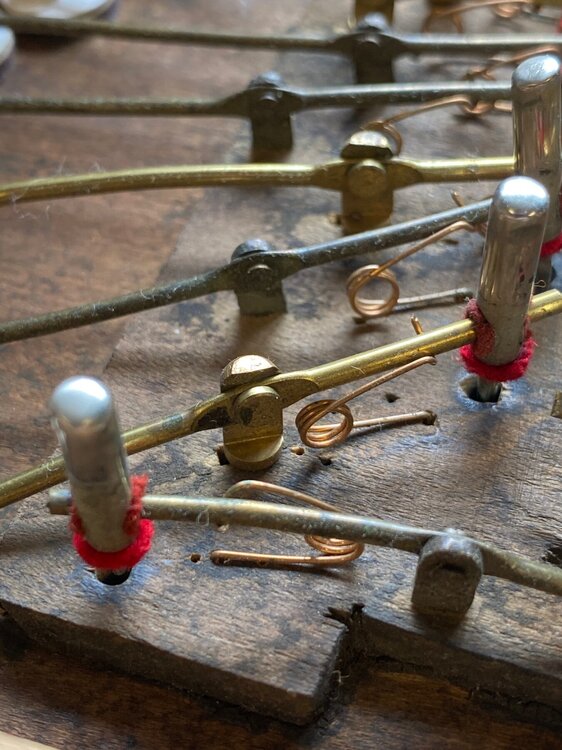
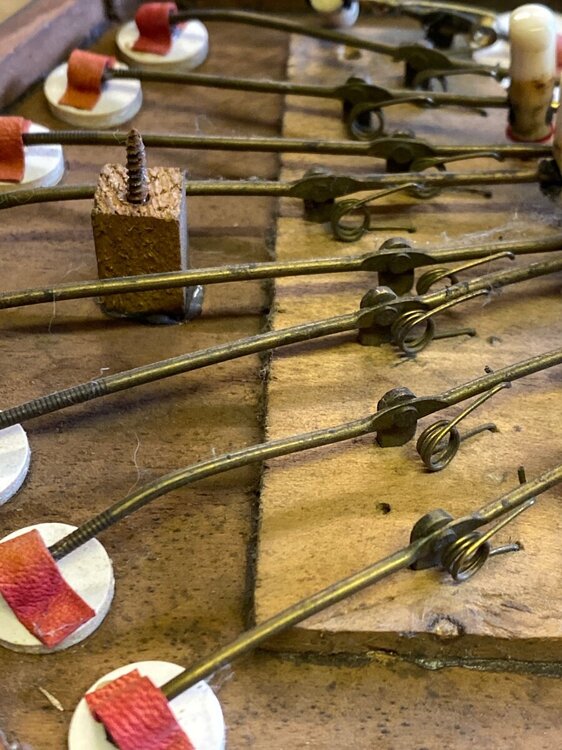
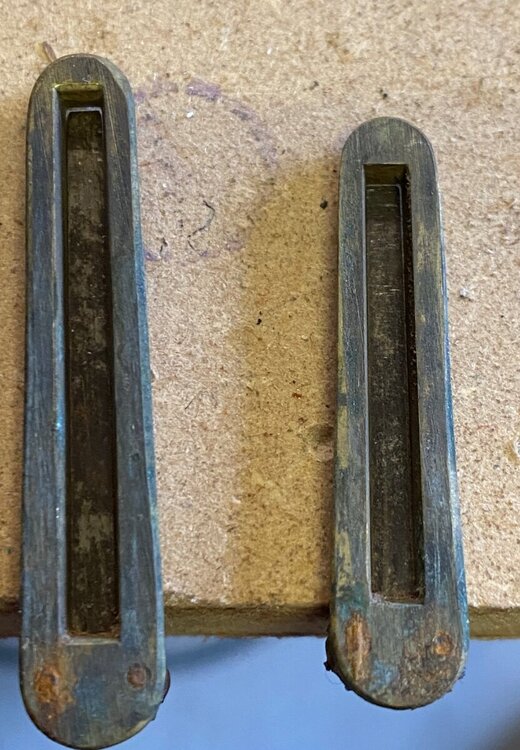
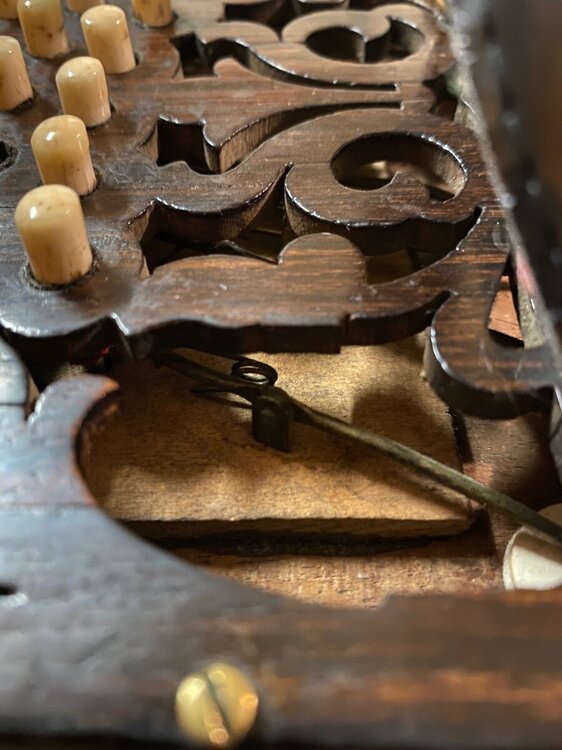


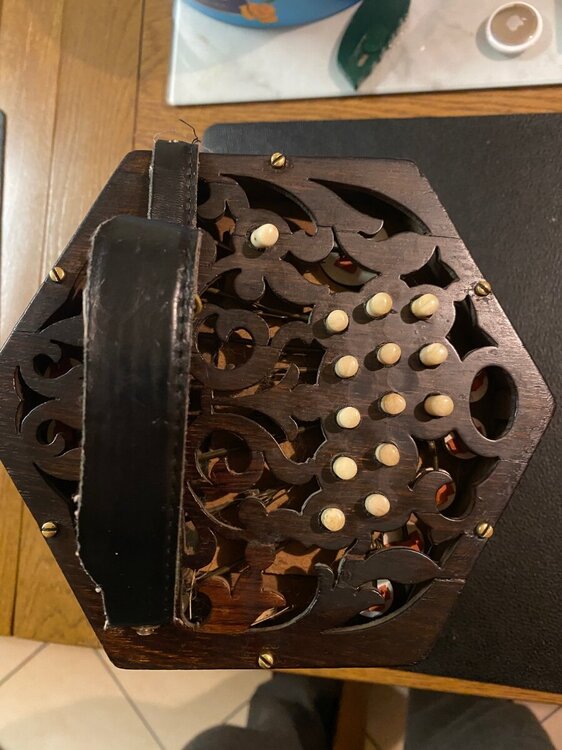
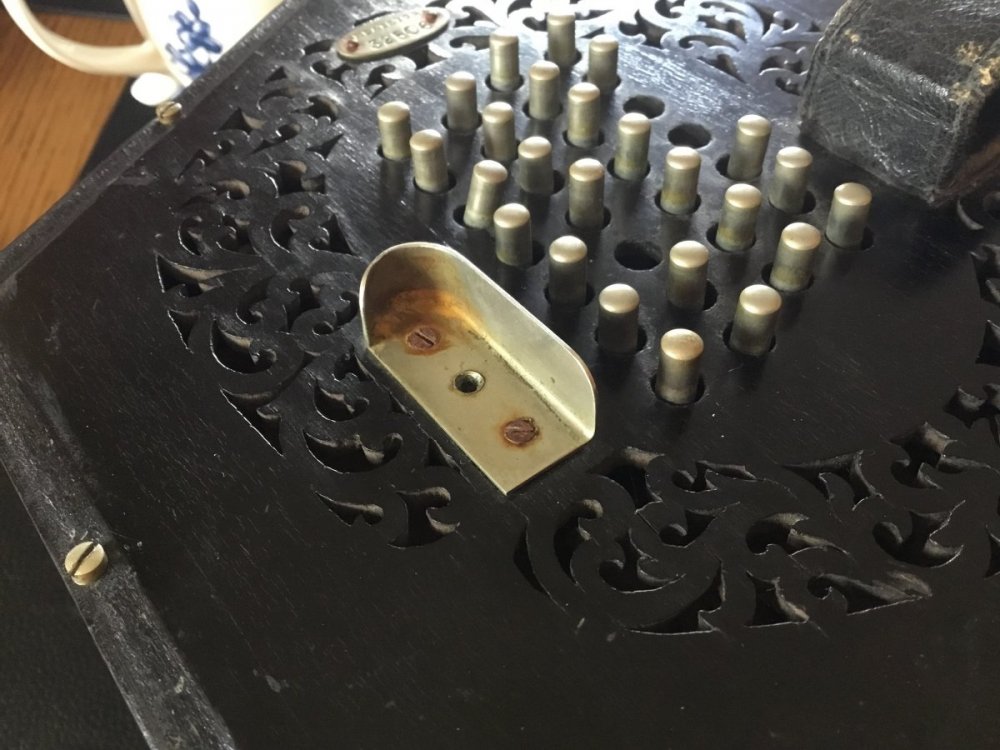
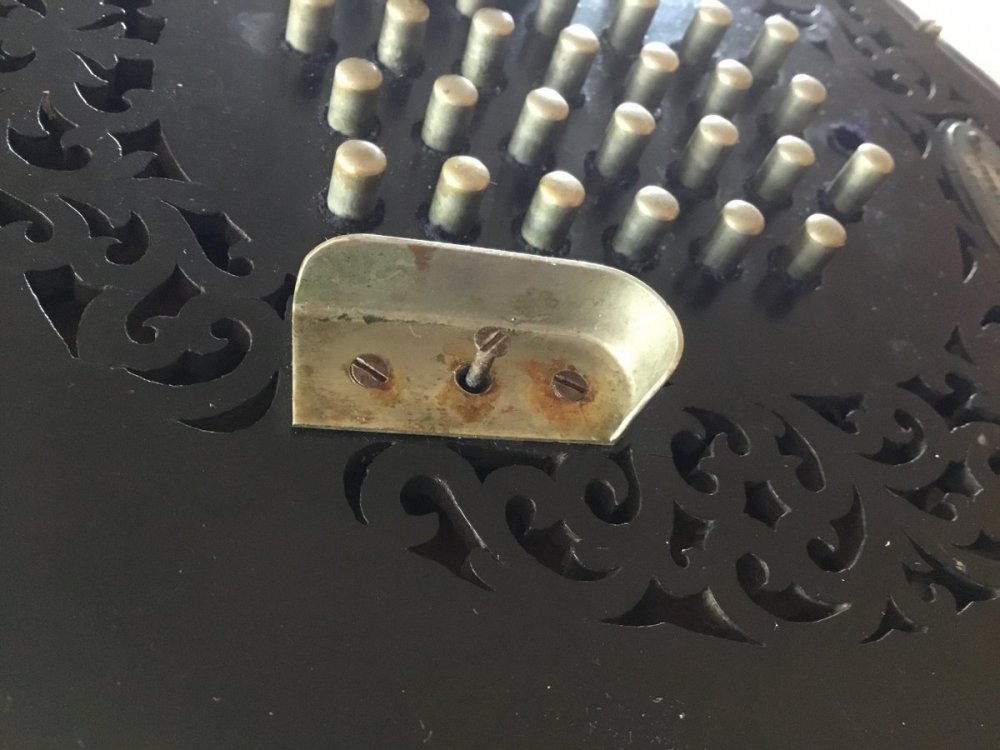
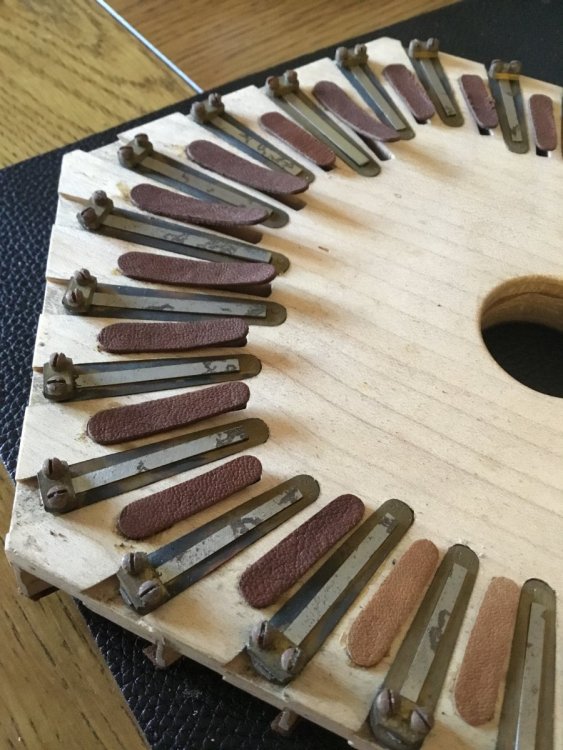
Lever type
in Instrument Construction & Repair
Posted
Thanks Jake. That’s them alright.